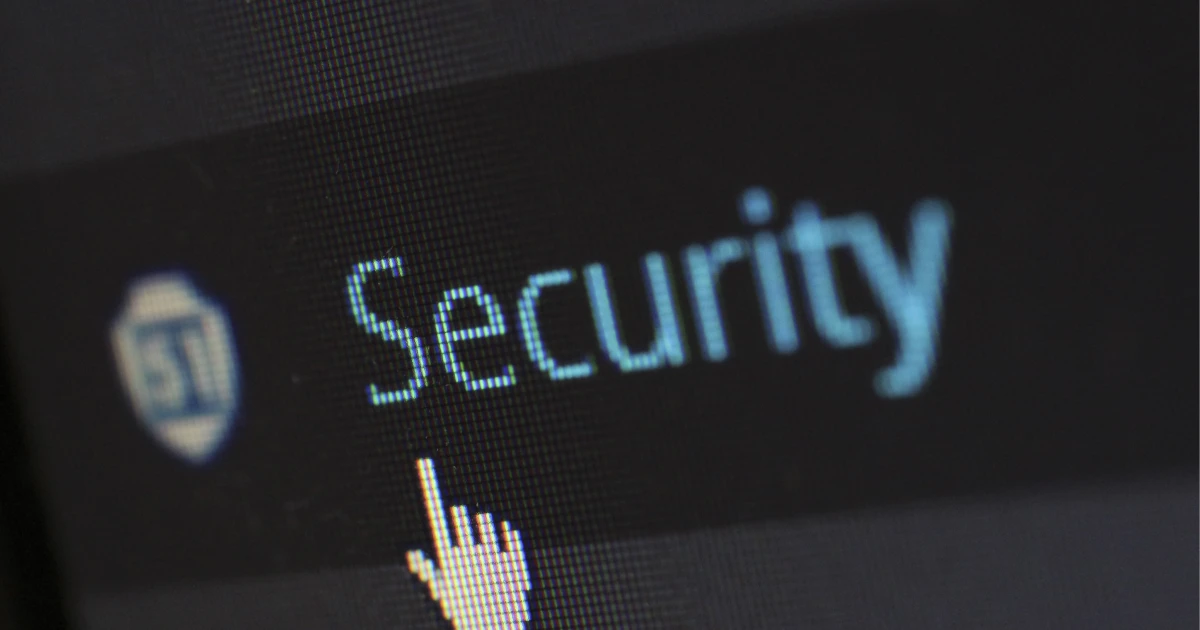
Why securing patient data should be your number one priority
Nov 21
9 min read
Cyber threats have escalated considerably in recent years as the healthcare industry has become increasingly digitized. Healthcare data is among the most valuable targets for cyber criminals, making data security a critical issue for organizations in the digital health field.
However, ensuring healthcare data's safety, security, and integrity is complex. This article explores the importance of data security, the most prevalent security problems and obstacles, and the procedures an organization must take to safeguard protected health information (PHI) and lower the danger of hostile attacks.
Why is healthcare data security important?
Healthcare data contains sensitive personal information such as medical histories, diagnoses, treatment plans, and financial information. Because of the increased use of electronic health records (EHR), the prevalence of data breaches is rising. If this information is not adequately secured, it can be used for fraudulent activities, violate privacy regulations, harm individuals, and result in significant financial loss.
Healthcare data breaches reached an all-time high last year. Healthcare breaches affected 45 million people in 2021, up from 34 million in 2020 and more than triple the 14 million affected in 2018.
It is more important than ever for hospitals and health systems to have effective cybersecurity measures that allow them to detect, respond to, and report any intrusions quickly, preventing operational disruptions and protecting patients' health and safety.
The impact of a healthcare data breach
A healthcare data breach can harm the healthcare provider’s reputation, compromise the security of protected health information, and expose healthcare organizations to liability.
Brand impact
A data breach can severely damage the reputation and trust of a healthcare organization, leading to an exodus of existing patients and difficulty attracting new ones.
Security
A breach can also compromise the security of the organization’s systems via cyber or ransomware attacks, putting sensitive patient information at risk. This can result in additional violations and incur high costs for organizations forced to re-secure their systems or reclaim data encrypted by ransomware.
Liability
In addition, failing to protect patient data may result in legal and financial repercussions for the healthcare organization. This includes potential legal action from affected patients and monetary fines for violating HIPAA regulations.

What is healthcare data security?
In the context of healthcare data, "security" refers to the safeguards put in place to prevent unauthorized access, use, disclosure, alteration, or destruction of sensitive and confidential information. This can include protecting data both physically and electronically.
Healthcare data security encompasses a range of security controls, including access controls to ensure that only authorized individuals can access the data; encryption to protect data both at rest and in transit; backup and disaster recovery planning; software security and patch management; employee training; mobile device security; and third-party vendor security.
It is essential to understand that ongoing maintenance and testing are required to achieve the highest levels of data security. It should also be noted that security involves several layers, including technological considerations, user training, and compliance with data security legislation.
With the successful implementation of data security, organizations can ensure the confidentiality, integrity, and availability of data and avoid causing harm to individuals and organizations due to data breaches and unauthorized access.
Challenges in healthcare data security
The following are some of the top security challenges encountered in digital health today.
Ransomware attacks
As you’ve likely seen in the news, the healthcare sector has become an increasingly popular target for ransomware attacks, resulting in widespread disruptions and financial losses. Cyber attacks on healthcare companies outnumbered even those in the finance industry last year.
Over time, ransomware tactics have evolved and become more sophisticated. The most common methods include phishing, Remote Desktop Protocol exploitation, and software vulnerability exploitation. Healthcare organizations must prioritize cybersecurity and regularly assess and update their security measures to minimize the impact of malicious incursions into their digital systems.
EHR vulnerabilities
Electronic health record systems (EHRs) have allowed patients to more easily access their information and providers to more easily share that data, making patient care more efficient. However, networks containing large amounts of protected health information (PHI) are attractive to cyber criminals and can be made vulnerable by ineffective storage and handling procedures.
PHI is a valuable commodity on the dark web because it can be used for illegal purposes, including identity theft, medical fraud, and extortion. Because of the high criminal demand for this sensitive information, healthcare organizations must invest sufficient resources into ensuring PHI is adequately protected
Med health mobile apps and telehealth services
The use of telehealth and mobile health apps can make healthcare more accessible, but it also introduces several security risks. Personal mobile devices and software frequently lack the security features required to protect PHI effectively.
Furthermore, patients may not understand the importance of protecting their information with multi-factor authentication (MFA) or strong passwords. Without these safeguards, PHI is more vulnerable to data breaches, making data security more challenging to implement.
IoT security vulnerabilities
Wearable devices, Software as Medical Devices (SaMD), remote patient monitoring (RPM) systems, clinical equipment, and asset tracking systems are all potential parts of the Internet of Things (IoT) ecosystem that can help the healthcare industry improve patient care and streamline operations. However, these technologies also open the door to significant security risks, such as unsecured data transmission, device vulnerabilities, insider threats, and inadequate network security.
Thus, IoT in healthcare has the potential to revolutionize patient care and improve healthcare outcomes, but it is essential for organizations to properly secure these devices to protect PHI.
Insider threats
Insider threats in healthcare are security incidents that occur when a person with authorized access to sensitive information misuses that access for malicious purposes or causes harm unintentionally. Insider threats can be caused by accidental insiders, rogue employees, former employees, or compromised accounts, making it critical for healthcare organizations to lock data down using standard access and security measures.
Common security pitfalls in healthcare
Here are some of the most common security pitfalls organizations face when dealing with healthcare data.
Inadequate access control
One of the most common causes of healthcare data breaches is the failure to properly limit access to sensitive information. Access control is a security mechanism that governs who can see and edit PHI. Inadequate access controls can result in unauthorized access and data breaches.
Lack of encryption
Encryption is essential for safeguarding sensitive data and preventing breaches. When data is encrypted, it is converted into code that can only be understood with the use of a decryption key. Even if data falls into the wrong hands, encryption can help prevent unauthorized access.
Poor data backup and disaster recovery planning
A well planned and tested backup and disaster recovery plan is critical for protecting sensitive data and minimizing the impact of data loss in the event of a crisis, such as a cyber attack, natural disaster, or system failure. Failure to implement these systems can result in data loss, downtime, and compliance violations, negatively impacting the organization's finances and reputation.
Unpatched software
Outdated software may contain known security flaws that attackers can easily exploit. These flaws can be directly targeted by cybercriminals, resulting in data theft. Furthermore, unpatched software can put an organization at risk of violating privacy and security due-diligence regulations, resulting in hefty fines and reputational damage.
Insufficient employee training
Employees are critical in safeguarding sensitive information and enforcing data security policies. Therefore, neglecting to train employees on best practices may inadvertently result in data breaches. Employee training can impact data security in various ways, including through policy violations, falling for phishing attacks and malicious activity, and compromising sensitive information.
Mobile device security
With the increasing use of smartphones, tablets, and wearables in the healthcare industry, it is critical to ensure that these mobile devices are properly secured. Poor mobile device security can result in data loss, data theft, and/or HIPAA violations.
Poor third-party vendor security
Healthcare organizations frequently use third-party vendors to provide EHRs, billing, and patient communication services. However, if these vendors' security practices are lax, there is a risk that data will be stolen or compromised. Healthcare organizations frequently lose control of data due to a lack of visibility into the security measures of third-party vendors.
Protecting healthcare data
Best practices for protecting PHI address threats to security at endpoints, in the cloud, and everywhere in between. Protecting data while it's in transit, at rest, and in use necessitates a multifaceted, sophisticated security strategy.
Here are some steps organizations can take to reduce the risk of data breaches while protecting the safety and integrity of healthcare data.

Educate healthcare staff
When healthcare staff are trained in data security best practices and understand the importance of safeguarding sensitive information, they are better prepared to prevent data breaches and protect patient data. Training personnel can improve data security by increasing alertness to possible threats, limiting account exposure, and improving incident response.
Encrypt sensitive data at rest and in transit
Healthcare organizations should implement encryption technologies to secure data at rest and in transit to ensure that sensitive information is adequately protected. Tools for protecting data in this way include encryption algorithms, secure communication protocols, and storage solutions. Organizations should also regularly evaluate their encryption practices to keep up with evolving threats and protect PHI.
Log and monitor use
By logging and monitoring PHI access, organizations can better understand who is accessing the information and what actions they are taking. This data can be used to detect and respond to security incidents, prevent data breaches, improve auditing and compliance, and ensure that PHI is used correctly.
Improve access control
Access control determines who has permission to access PHI and what actions they can take. Improving access control can help secure healthcare data in various ways, with variations including role-based access control, multi-factor authentication, the principle of least privilege, and regular auditing and monitoring.
Secure mobile devices
To ensure healthcare data security on mobile devices, organizations should implement various security measures, including encryption, password protection, mobile device management solutions, remote wipe capabilities, regular software updates, and network security.
Assess third-party vendor security
Assessing third-party data security helps organizations identify potential risks, ensure compliance with industry regulations, and improve overall PHI security. By conducting regular assessments of external partners and vendors, healthcare organizations can ensure that the data they exchange with these organizations is secure from unauthorized access, theft, and loss.
Robust data backup and disaster recovery plan
Companies that are prepared to deal with security incidents will find themselves well on their way to resolving them when they occur. A well designed system can ensure that necessary data is protected and quickly restored in the event of a disaster or security breach, minimizing the impact on patient care and lowering the risk of data loss. Furthermore, it aids in ensuring compliance with industry regulations and maintaining business continuity.
Continuously monitor and evaluate security
Healthcare organizations can protect themselves from potential threats and ensure the security of their data by regularly monitoring and assessing their security systems and processes. Continuous monitoring and evaluation can improve data security in various ways, aiding in threat detection, vulnerability management, compliance, and data security.
Mitigate connected device risks
Because of the increased use of connected devices in the healthcare sector, mitigating connected device risk is essential to improving data security. It contributes to lowering the overall risk to patient data by ensuring compliance with industry regulations, improving data security, and ensuring business continuity.
Practice insider threat prevention
Healthcare organizations should implement strict access controls, provide employee training, monitor and detect suspicious activity, and have an incident response plan to practice insider threat prevention. Furthermore, they should conduct background checks and implement physical security measures to reduce the risk of insider threats.
Keep software up-to-date
Regular software and patch updates are critical because they help prevent the exploitation of known security vulnerabilities and improve data security, compliance, and threat detection.

Key takeaways
Due to the growing number of cyber threats, data security in healthcare is more important than ever. It is a highly complex issue that must be approached with caution and an awareness that data security must be maintained at all times, both at rest and in transit.
We must also take a layered approach to data security, employing strategies such as passwords, employee training, infrastructure architecture, appropriate software design, and exposure limiting. As a result, adhering to data security regulations such as HIPAA and implementing all necessary strategies will ensure the highest levels of security for protected health information stored and handled by healthcare systems.
Mike Biglan
Founder and CEO Mike Biglan has led the creation of transformative digital products adopted by millions of users–including digital therapeutics, AI-powered RPM platforms, an X-Prize-winning adult literacy intervention, and more. Mike also led the creation of Marco Polo, an acclaimed consumer-facing video messaging/streaming app with tens of millions of downloads.
by this author




